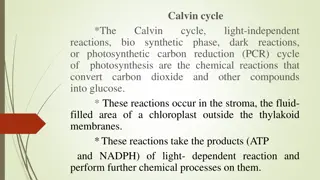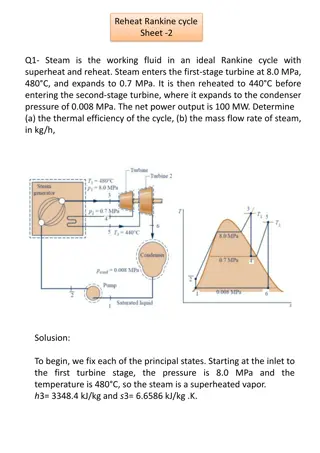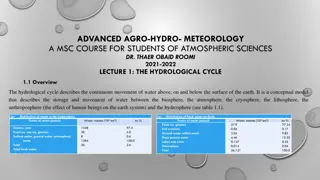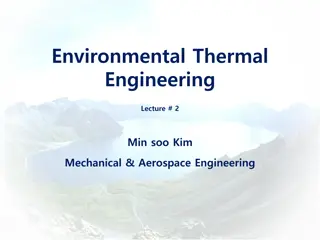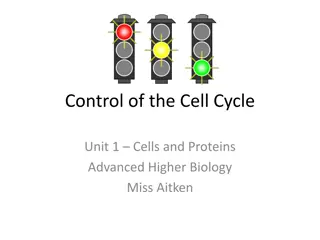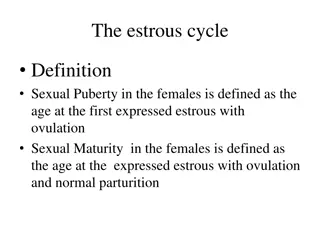
The Tricarboxylic Acid (TCA) Cycle: Importance and Stages
Explore the significance of the TCA cycle in energy production and biosynthesis. Learn about the stages involved in this essential process for aerobic organisms. Discover the role of TCA in releasing stored energy through the oxidation of acetyl-CoA. Dive into the key concepts of the Krebs cycle and its vital role in cellular metabolism.
Download Presentation

Please find below an Image/Link to download the presentation.
The content on the website is provided AS IS for your information and personal use only. It may not be sold, licensed, or shared on other websites without obtaining consent from the author. If you encounter any issues during the download, it is possible that the publisher has removed the file from their server.
You are allowed to download the files provided on this website for personal or commercial use, subject to the condition that they are used lawfully. All files are the property of their respective owners.
The content on the website is provided AS IS for your information and personal use only. It may not be sold, licensed, or shared on other websites without obtaining consent from the author.
E N D
Presentation Transcript
StudyMafia.Org Tricarboxylic Acid(TCA) Cycle Submitted Submitted To: S Studymafia.org Studymafia.org tudymafia.org Studymafia.org To: Submitted Submitted By: By:
Table Contents Definition Introduction Importance of TCA Cycle Stages of TCA Cycle End-Product of TCA Cycle Conclusion 2
Definition TCA cycle is the series of chemical reactions used by all aerobic organisms to release stored energy through the oxidation of acetyl CoA derived from carbohydrates, fats, and proteins into ATP. 3
Introduction TCA cycle or Tricarboxylic Cycle is also known as Kreb s Cycle or Citric Acid Cycle. It is the second stage of cellular respiration that occurs in the matrix of mitochondria. All the enzymes involved in the citric acid cycle are soluble. It is an aerobic pathway because NADH and FADH2produced transfer their electrons to the next pathway which will use oxygen. The TCA cycle is a closed loop. The last step of the pathway regenerates the first molecule of the pathway. 4
Importance of TCA cycle The citric acid cycle, also known as the Krebs cycle or the tricarboxylic acid cycle, is at the center of cellular metabolism, playing a starring role in both the process of energy production and biosynthesis. It finishes the sugar-breaking job started in glycolysis and fuels the production of ATP in the process. 5
Stages of TCA Cycle Step 1 Acetyl Co-A combines with a four-carbon compound, oxaloacetate, and releases the CoA group resulting in a six-carbon molecule called citrate. Step 2 In the second step, citrate gets converted to isocitrate, an isomer of citrate. This is a two-step process. Citrate first loses a water molecule and then gains one to form isocitrate. 6
Stages of TCA Cycle Step 3 The third step involves oxidation of isocitrate. A molecule of carbon dioxide is released leaving behind a five-carbon molecule, -ketoglutarate. NAD+gets reduced to NADH. The entire process is catalyzed by the enzyme isocitrate dehydrogenase. 7
Stages of TCA Cycle Step 4 Here, -ketoglutarate is oxidized reducing NAD+to NADH and releasing a molecule of carbon dioxide. CoA is picked up by the remaining four-carbon molecules forming an unstable compound succinyl CoA. -ketoglutarate dehydrogenase catalyzes the entire process. Step 5 CoA from succinyl CoA is replaced with a phosphate group. It is then transferred to ADP to make ATP. Succinate, a four-carbon molecule is produced in this step. 8
Stages of TCA Cycle Step 6 Succinate is oxidized to fumarate. Two hydrogen atoms are transferred to FAD to produce FADH2. FADH2transfers its electrons directly to the electron transport chain since the enzyme carrying out the reaction is embedded in the inner membrane of mitochondria. 9
Stages of TCA Cycle Step 7 A water molecule is added to fumarate which is then converted to malate. Step 8 The oxidation of malate regenerates oxaloacetate, a four-carbon compound, and another molecule of NAD+is reduced to NADH in this step. 10
Conclusion The TCA cycle is a set of eight catalyzed reactions and eight intermediates that break down hydrocarbon substrates into carbon dioxide (CO2) and water (H2O) using the energy released to protonate nicotinamide adenine dinucleotide converting from NAD+ to NADH or flavin adenine dinucleotide from FADH to FADH2. 12
References Google.com Wikipedia.org Studymafia.org Slidespanda.com
Thanks To StudyMafia.org








